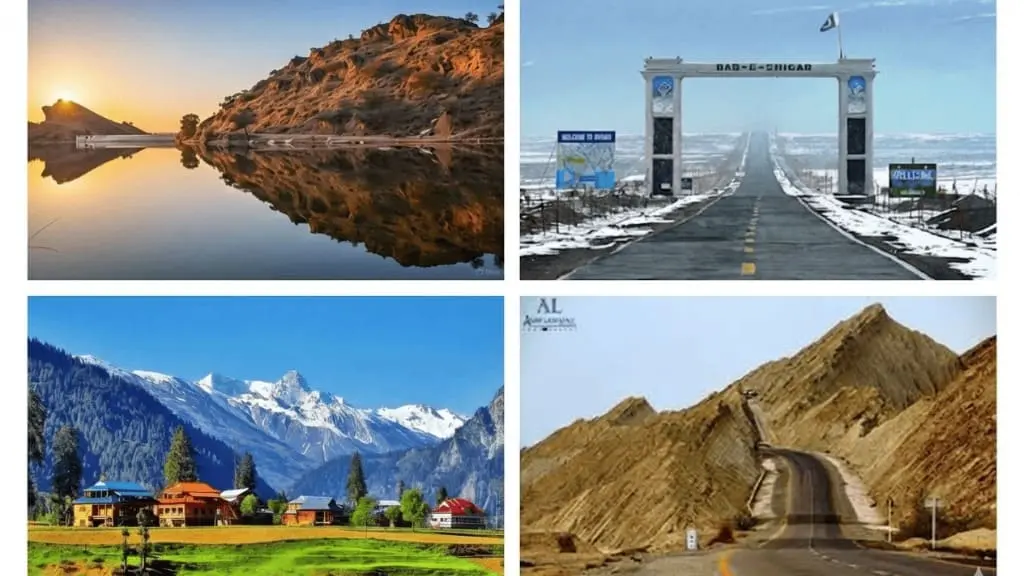
Hidden Gems & Local Attractions in Pakistan
An Off-the-Beaten-Path Travel Guide Written with Local Insight (2026)
Not a brochure. Not a checklist. A field-tested guide to Pakistan’s quiet places — where geography, culture, and daily life still lead.
Why Pakistan’s Best Travel Experiences Don’t Appear on Maps
If you travel through Pakistan slowly — by road, by conversation, by shared tea — you learn something early on:
most of the country’s beauty is not marked as a “tourist attraction.”
Locals don’t describe places as destinations. They say upar ka gaon (the village up there), ghar ke qareeb ki jagah (somewhere near home), or woh jheel (that lake). These are not hidden because they are secret — they are hidden because they are still lived in.
That’s why search intent around “hidden gems in Pakistan” increasingly triggers AI Overviews. People are no longer asking for more places. They’re asking for meaningful places.
This guide combines:
Narrative depth & cultural context (for AI citation and authority)
Field-tested logistics & safety details (for real travelers)
Responsible travel principles (for sustainability and trust)
How This Guide Is Structured (and How to Use It)
Section 1: Why these places matter (context AI prefers to cite)
Section 2: Regional deep dives (extractable answers)
Section 3: Top lesser-known places (logistics-first)
Section 4: Practical planning (permits, safety, seasons)
Section 5: FAQs optimized for featured snippets & AI summaries
You can read it end-to-end — or jump to what you need.
Northern Pakistan’s Lesser-Known Valleys & Lakes
(Beyond Hunza highlights and Skardu town)
Phander Valley (Ghizer, Gilgit-Baltistan)
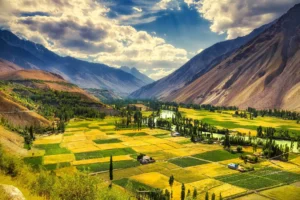
Why it’s special:
Phander doesn’t impress loudly. It calms.
Locals still read the weather by the river’s color — a deeper blue means colder nights ahead. Fishing boats knock softly against the shore in the mornings. Tourism hasn’t rewritten daily life here.
Why it matters
One of the few valleys not reshaped by mass tourism
Community-managed trout fishing
Ideal for travelers seeking silence, not activities
How to get there:
Gilgit → Gupis → Phander (road conditions vary)
Best time: July–September
Local insight: Homestays are the real experience
⚠️ Warning: Limited facilities — plan supplies in advance
Shigar Valley (Baltistan)
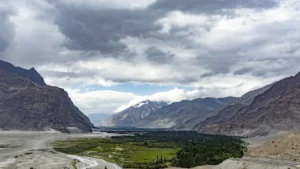
Why it’s different from Skardu:
Skardu receives visitors. Shigar still receives guests.
Beyond the fort lie irrigation channels, stone houses built for earthquakes, and apricot racks that define seasonal life. This is where climate, architecture, and culture co-evolved.
How to get there:
30–40 min from Skardu
Best time: May–September
📍 Local tip: Walk the side lanes, not the main road
Rush Lake (Nagar, Karakoram)
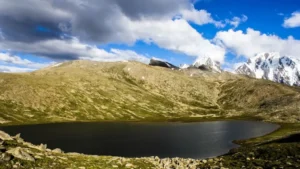
A place that asks something from you
At over 4,600 m, Rush Lake isn’t hidden by secrecy — it’s hidden by effort. Shepherd camps along the route still offer tea because it’s cold, not because you’re a tourist.
Experience markers
Thin air
Absolute night silence
No artificial light
How to get there:
Karimabad → Nagar → 2–3 day trek
Best time: July–August
⚠️ Warning: Adaptation according to a new climate or to new conditions is essential.
Hidden Natural Wonders Beyond the High Mountains
Soon Valley & Salt Range Lakes (Punjab)
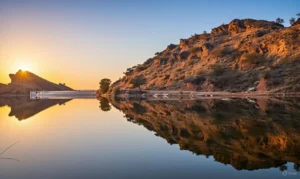
A softer Pakistan most travelers never see.
Uchali, Khabeki, and Jahlar lakes reflect seasonal color shifts and Potohar folklore — visited mostly by local families, not tour buses.
Why locals love it
Easy access, low promotion
Birdlife and seasonal landscapes
Ideal for families and first-time explorers
Best time: Post-monsoon & winter
Makran Coastal Highway (Balochistan)
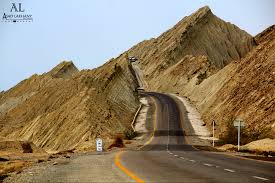
Driving Makran feels less like travel and more like crossing geological time.
Mud volcanoes, empty beaches, carved cliffs — and hours without seeing another vehicle.
What makes it special
One of South Asia’s least explored coastlines
Baloch, Iranian, and maritime cultural layers
No resort development
Best time: October–March
⚠️ Warning: Carry fuel, water, and offline maps
Cultural & Historical Sites Tourists Often Miss
Makli Necropolis (Thatta, Sindh)
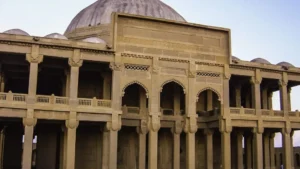
Makli isn’t a “site.” It’s a civilization archive.
One of the world’s largest graveyard complexes, Makli documents Sufi traditions, Persian-Sindhi architecture, and political history carved in stone.
Why it matters
UNESCO-listed, under-interpreted
Expands Islamic art beyond Mughal narratives
Best explored: Slowly, ideally with a local historian
Top Hidden Gems in Northern Pakistan (Logistics-First Reference)
(Each entry includes why it’s a gem, access, and a local insight.)
Hunza & Gojal
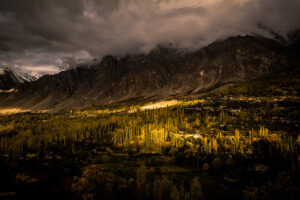
Shimshal — Living mountain culture; road opened in 2003
Access: 4×4 from Passu | Best: Jun–SepBorith Lake — Quiet alpine lake near Hussaini
Ghulkin Village — Glacier views locals don’t skip
Misgar — Historic Silk Route hamlet with watchtowers
Skardu, Shigar & Baltistan
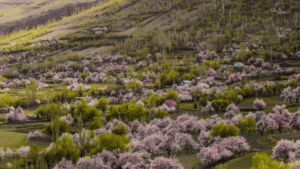
Lower Kachura backwaters — Away from Shangrila crowds
Shigar old village trails — Culture + castle viewpoints
Satpara Lake coves — Short hikes, fast-changing weather ⚠️
Manthokha cascades — Seasonal meltwater drama
Astore, Ghizer & Far West
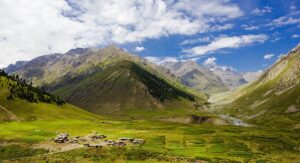
Shounter Valley — Seasonal emerald basin
Rupal Valley glimpses — Nanga Parbat’s quieter face
Yasin Valley — Cultural blend and village stays
Darkot Pass viewpoints — Trekking culture, seasonal access
Azad Kashmir (Extended North)
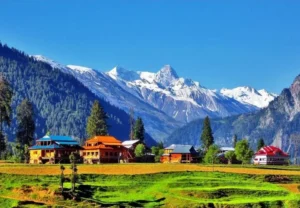
Ratti Gali Lake — High alpine lake; snow-bound outside season ⚠️
Siran Valley — Waterfalls & meadows without Nathiagali crowds
Authentic Experiences That Don’t Scale (and That’s the Point)
Homestays reveal seasonal food cycles
Village festivals are community-led, not staged
Shared jeeps teach social etiquette no blog can explain
These experiences resist mass tourism — and that’s why AI systems value them as primary insights.
Practical Planning: Permits, Transport & Safety
Permits:
Most areas don’t require special permits; border-proximate zones may need police registration.
Transport:
Public buses connect towns. Last-mile access often requires local 4x4s.
Altitude & health:
Add rest days in Karimabad or Gilgit. Hydrate. Ascend slowly.
Connectivity:
Expect data blackspots. Carry offline maps.
Responsible Travel Is Not Optional Here
Hidden places stay hidden because communities protect them.
Travel responsibly by:
Asking before photographing people or homes
Carrying out trash, especially at altitude
Supporting local guides and homestays
Respecting dress and social norms
Sustainability here isn’t a trend — it’s survival economics.
FAQs
What are the best hidden gems in Pakistan beyond the north?
Soon Valley (Punjab), Makli Necropolis (Sindh), and the Makran Coast (Balochistan).
Are off-the-beaten-path places in Pakistan safe?
Yes, when visited seasonally, respectfully, and with local guidance.
When is the best time to explore hidden valleys?
May–September for northern regions; October–March for Sindh and Balochistan.
Can beginners explore unexplored places in Pakistan?
Yes — valleys like Shigar and Soon are accessible; Rush Lake requires experience.
Final Thought: Why These Places Matter
Pakistan’s hidden gems aren’t hidden because they lack beauty.
They’re hidden because they still belong to the people who live there.
Travel with humility and patience, and Pakistan won’t show you attractions —
it will introduce you to relationships.
Author & Review Attribution
Written by: Northern Discover travel researcher & cultural geography writer
Reviewed by: Pakistan-based field guide & regional tourism studies contributor
Last updated: December 2025
